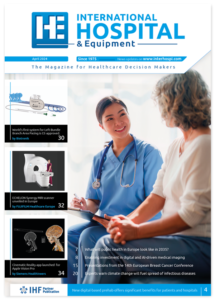A new ‘telerehabilitation’ approach lets physical therapists assess patients with low back pain (LBP) over the Internet, with good accuracy compared with face-to-face examinations, reports a study.
Taking advantage of Skype and other widely-used services may make telerehabilitation a more feasible alternative to in-person clinic visits, according to the new research by Prof. Manuel Arroyo-Morales and colleagues of University of Granada, Spain. They believe their results ‘give preliminary support to the implementation of web-based LBP assessment systems using video recordings that can be evaluated by different therapists.’
The researchers designed and evaluated a web-based telerehabilitation system for performing routine clinical assessments of patients with LBP. The telerehabilitation setup operated across a low-bandwidth Internet connection between two personal computers equipped with webcams.
The system included the popular Skype videoconferencing service, allowing the patient and physical therapist could see and talk to each other in real time. The therapist guided the patient in performing specific movements, and captured video clips for analysis using video motion analysis software (Kinovea). The therapist and patient were also able to complete standard back pain questionnaires using the web-based system.
Fifteen patients with chronic LBP underwent two assessments in random order: once face-to-face and once using the telerehabilitation setup. Accuracy was assessed by comparing the results of telerehabilitation assessment with those of in-person assessment.
The results showed good agreement between the two evaluations, supporting the use of telerehabilitation for clinical assessment of LBP. There was good correlation for measures made on video motion analysis, such as spine mobility and back muscle endurance; as well as questionnaire-based assessments such as disability, pain, and health-related quality of life.
The telerehabilitation setup showed consistent results for the same therapist at different times (intra-rater reliability) as well as for assessment by independent therapists (inter-rater reliability).
There is growing interest in Internet-based systems for assessment of patients with musculoskeletal disorders. Telerehabilitation approaches could be especially valuable for patient in rural or remote areas, who don’t have easy access to healthcare providers.
In the past, the use of telerehabilitation was limited by high equipment costs. The new study shows the successful use of telerehabilitation using widely available and familiar technology, including the use of free software such as Skype.
The telerehabilitation system evaluated in the new study may be useful in assessing patients with the very common problem of LBP, showing good agreement with the results of face-to-face assessment. However, there are still some factors limiting more widespread use

